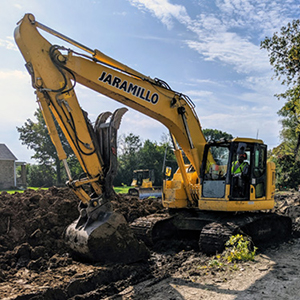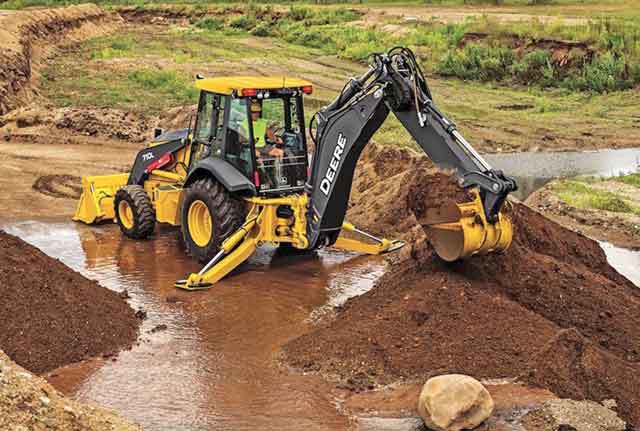Lancaster Excavation - Expert Excavation Services in Lancaster, OH
Lancaster Excavation - Expert Excavation Services in Lancaster, OH
Blog Article
In-Depth Exploration: The Scientific Research Behind Superior Excavation Practices
The world of excavation methods is a domain where scientific research links with workmanship to uncover the mysteries hidden beneath the earth's surface. From ancient hand tools to contemporary hydraulic excavators, the development of excavation methods has actually been a testimony to human resourcefulness and technological developments. What genuinely establishes remarkable excavation techniques apart is a deep understanding of geological concepts, paired with the application of cutting-edge tools and approaches. By discovering the science behind these methods, we can reveal the secrets that lie under our feet and value the accuracy and knowledge that go right into every dig.
Development of Excavation Techniques
Throughout background, the development of excavation methods has played a vital role ahead of time building methods and archaeological explorations. From the simple devices utilized by our ancestors to the advanced machinery used in modern times, the development of excavation methods has actually dramatically transformed just how we come close to different tasks.
In old times, manual work with fundamental devices such as pickaxes, shovels, and wheelbarrows was the primary approach of excavation. This labor-intensive procedure restricted the deepness and range of excavations, usually causing sluggish development and restricted access to certain websites. As people advanced, so did the methods and tools made use of for excavation.
The Industrial Transformation noted a turning point in excavation experiment the intro of steam-powered equipment. This development reinvented the area, allowing for faster and much more considerable excavations. In modern times, modern technology plays a pivotal role in excavation, with improvements like general practitioner systems, drones, and 3D scanning boosting precision and efficiency in the field. The evolution of excavation methods proceeds to shape the way we construct, check out, and recognize the world around us.
Role of Innovation in Excavation

The combination of advanced technology has actually basically reinvented the field of excavation, enhancing accuracy and performance to unprecedented degrees. One of the key technical advancements that has actually substantially impacted excavation techniques is the application of GPS systems. These systems enable for exact mapping of excavation websites, making it possible for drivers to accurately situate below ground energies and structures. Additionally, the usage of telematics in excavation tools has actually allowed real-time surveillance of maker performance, resulting in positive upkeep and increased functional performance.
Furthermore, the arrival of 3D modeling and simulation software application has streamlined the planning procedure for excavation projects. Drivers and designers can now imagine the whole excavation process prior to breaking ground, identifying possible obstacles and maximizing workflow. In conjunction with this, the application of drones in excavation tasks has actually promoted aerial studies, volumetric dimensions, and site examinations with unparalleled rate and accuracy.
Geological Principles in Excavation
An understanding of geological principles is crucial for making certain the structural stability and stability of excavation websites. Geological elements play a crucial function in identifying the usefulness and safety of excavation tasks.
Additionally, the geological framework of the area, including mistakes, fractures, and rock formations, must be very carefully examined to recognize potential risks and challenges. Excavating near mistake lines or unsteady rock formations can bring about instability and prospective threats. By carrying out comprehensive geological studies and analysis, excavators and engineers can create techniques to minimize risks and make sure the successful completion of excavation tasks. Ultimately, incorporating geological concepts right into excavation methods is critical for achieving secure, efficient, and sustainable outcomes.

Most Current Devices for Excavation
In the world of excavation practices, contemporary advancements in devices have actually revolutionized the effectiveness and accuracy of excavation procedures. One of the current tools making waves in the industry is the use of drones equipped with advanced imaging technology. These drones can provide detailed aerial surveys of excavation sites, offering real-time data on topography and possible threats. This details help in far better preparation and decision-making throughout the excavation procedure.
One more cutting-edge tool gaining appeal is the application of 3D printing modern technology for producing custom excavation tools. This enables the manufacturing of specialized tools that are customized to the certain requirements of a task, enhancing effectiveness and lowering downtime.
Additionally, developments in products science have actually caused the development of more powerful and a lot more resilient excavation tools. septic ohio. Tungsten carbide-tipped excavator add-ons, as an example, deal remarkable performance in difficult ground problems, enhancing productivity on-site
Scientific research's Impact on Excavation Practices

In addition, improvements in materials scientific look at more info research have actually caused the development of stronger, extra sturdy excavation tools and tools. For example, using composite products in miners and shovels has boosted their efficiency and durability, eventually increasing efficiency on excavation sites. Additionally, clinical research study on soil auto mechanics and geotechnical design has actually offered beneficial insights right Look At This into dirt behavior, click here for more enabling excavation professionals to make informed decisions pertaining to excavation methods and dirt stablizing strategies. On the whole, science remains to drive innovation and enhancement in excavation techniques, making excavation projects a lot more effective, cost-efficient, and lasting.

Final Thought
Finally, the development of excavation methods has actually been considerably influenced by developments in modern technology and a much deeper understanding of geological principles. The current tools and tools used in excavation have enhanced efficiency and accuracy in the field. The application of clinical expertise has considerably enhanced excavation practices, resulting in more lasting and reliable techniques for excavating different kinds of materials.
In the world of excavation techniques, modern advancements in tools have revolutionized the efficiency and precision of excavation processes. By leveraging clinical concepts, the excavation market has actually been able to substantially improve effectiveness, accuracy, and safety in excavation procedures. GPR enables excavation teams to non-invasively check and map subsurface frameworks, utilities, and potential dangers, enabling them to plan excavation tasks with higher precision and lowered danger of accidents.
In addition, clinical research on dirt mechanics and geotechnical engineering has actually offered valuable insights into soil habits, enabling excavation experts to make informed choices concerning excavation techniques and dirt stabilization strategies. Generally, science proceeds to drive development and renovation in excavation techniques, making excavation tasks much more reliable, economical, and sustainable.
Report this page